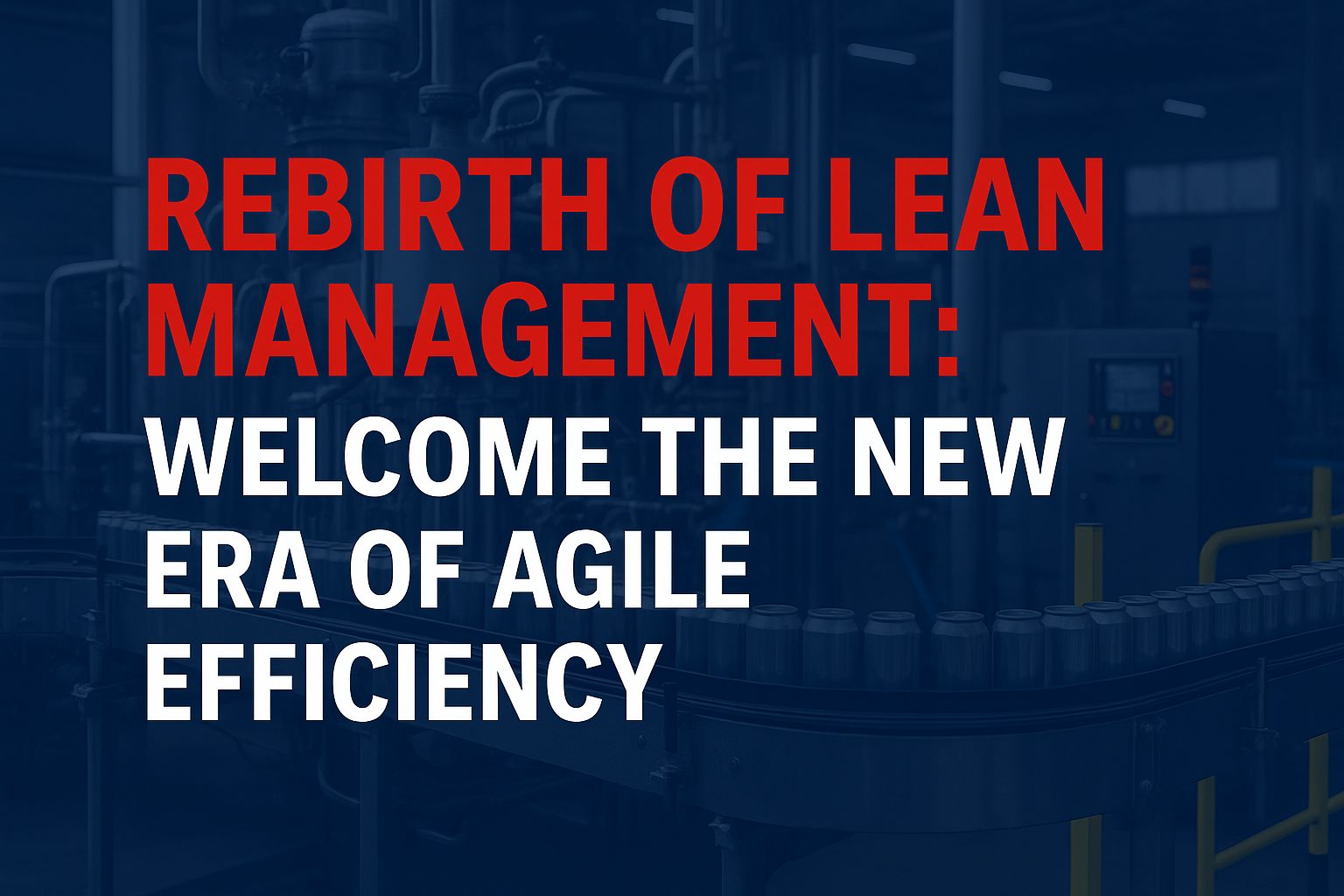By Raghavendra Rao, Operational Excellence Expert
This paper reframes Lean Management for the modern enterprise, revealing its strategic significance that extends beyond a mere toolkit for operational improvement. It positions Lean as a powerful strategic lens for CEOs and CFOs, offering a grounded, people-centered, and systems-driven approach to deliver shareholder value, agility, and long-term resilience in an era defined by volatility, digital noise, and sustainability pressures.
1. Introduction: Lean Thinking – The CEO’s Tool to Maximize Shareholder Value
In today’s volatile business environment, CEOs are expected to deliver agility, resilience, and sustained profitability simultaneously, without compromising on employee engagement or customer satisfaction. This balancing act demands more than operational control; it requires a strategic compass. Lean Thinking is that compass.
More than a production philosophy, Lean is a CEO’s tool—a framework to align purpose, people, and performance. It builds adaptive systems that minimize waste, amplify value, and drive sustainable growth. For CFOs focused on maximizing returns, Lean unlocks value that traditional cost-cutting never could.
When deployed wisely, Lean creates shareholder value by:
– Strengthening customer loyalty through consistent value delivery
– Compressing lead times and inventories without risking agility
– Reducing hidden costs buried in process inefficiencies
– Empowering employees to solve problems before they become costs
In short, Lean enhances enterprise value, not just operational output.
1A. Lean Thinking: The CEO & CFO’s Smartest Tool in 2025
Lean is a CEO’s tool. A wise CEO’s tool—and a CFO’s, too. But only if they understand that real ROI doesn’t appear in the next quarter but in the next cultural cycle. Lean isn’t just about VSM or PQDCSM. It’s about creating organizations that work because of systems, not despite them.
It enables:
– Resilient supply chains that breathe with demand and absorb complexity
– Agile enterprises that don’t just respond but anticipate
– Sustainable value creation that institutional investors and boards now expect
How Lean Boosts Shareholder Value?
- Lean Capability
- Strategic Outcome
- Eliminates hidden waste
- Improves EBIT without slash-and-burn tactics
- Aligns purpose and process
- Boosts enterprise valuation
- Engages problem-solvers
- Reduces firefighting and attrition
- Enables flow and visibility
- Shortens lead times and increases trust
- Sustains improvement
- Builds investor confidence
“If you expect ROI next month, Lean isn’t for you. If you want a sustainable advantage, it’s the only choice.”
2. What Lean Is (And Isn’t)
Lean is not about cutting costs or eliminating people. It is not a 5S checklist or a kaizen event done in isolation. Those are merely shadows of its essence.
At its core, Lean is about maximizing value by minimizing waste, where the customer defines what value means to them. Waste includes everything that doesn’t add to that value.
Today, Lean is: “A strategic mindset to create more value with fewer resources by developing people who solve problems at the root.”
3. Why Lean Still Matters (Even in the Age of AI & Digital)
Enterprises have poured millions into ERPs, IoT sensors, and automation—only to find themselves overwhelmed by data but underpowered in decision-making. Lean gives these digital investments direction and focus. It provides the connective tissue between technology and value.
- Toyota continues to outperform competitors in supply resilience by maintaining Lean disciplines.
- Amazon operates on Lean principles of flow and relentless customer value. For instance, their efficient order fulfillment process and customer-centric approach reflect the principles of Lean Thinking.
- Apple’s simplification and user focus echo Lean thinking, even without the label.
Lean is the force multiplier that makes digital transformation purposeful, coherent, and outcome-driven.
4. Lean 5.0: The Five Modern Advantages
Speed-to-Value – Lean aligns everyone rapidly toward what truly matters.
Clarity in Complexity – Lean reveals flow inefficiencies, constraints, and customer priorities in chaos.
Engaged Problem Solvers – Lean equips frontline teams to act on insight, not just instruction.
Sustainable Growth – Lean’s DNA aligns seamlessly with ESG principles and resource stewardship, providing a solid foundation for sustainable growth and instilling confidence in its long-term benefits.
Trust Across Tiers – Cross-functional collaboration becomes the norm, not the exception.
5. The CXO’s New Lens
Lean offers executive leaders visibility into the realities beneath the dashboard. In a real-world assignment, a CEO of a tier-one auto parts supplier realized his MIS was tracking metrics but missing momentum. A single Gemba Walk, a Lean practice where leaders observe operations in the workplace, revealed delays and misalignments hidden in plain sight.
In another instance, a pharmaceutical facility halved its lead time not through Six Sigma simulations but by realigning batch flows based on operator insights. The transformation came not from a tool but from trust and clarity—Lean at its best.
6. Lean Without Labels
Many organizations practice Lean principles without using the term. Agile startups, hospitals redesigning patient flow, and e-commerce businesses that test-learn-iterate—these are all Lean in action. The key lies in sustaining the practice, not in branding it.
7. Conclusion: The Competitive Edge No One Can Copy
Machines, AI, and consultants can be bought. What competitors cannot replicate is a deeply rooted culture of Lean thinking, where people are trained to see waste, solve problems, and continuously improve.
Lean isn’t obsolete. It’s misunderstood. As leaders rediscover clarity, simplicity, and purposeful growth, Lean emerges again—not as a relic of the past but as a necessity for the future, inspiring and motivating leaders to adopt its principles.
Ready to lead with clarity? Start Lean. Stay human. Win every day.



